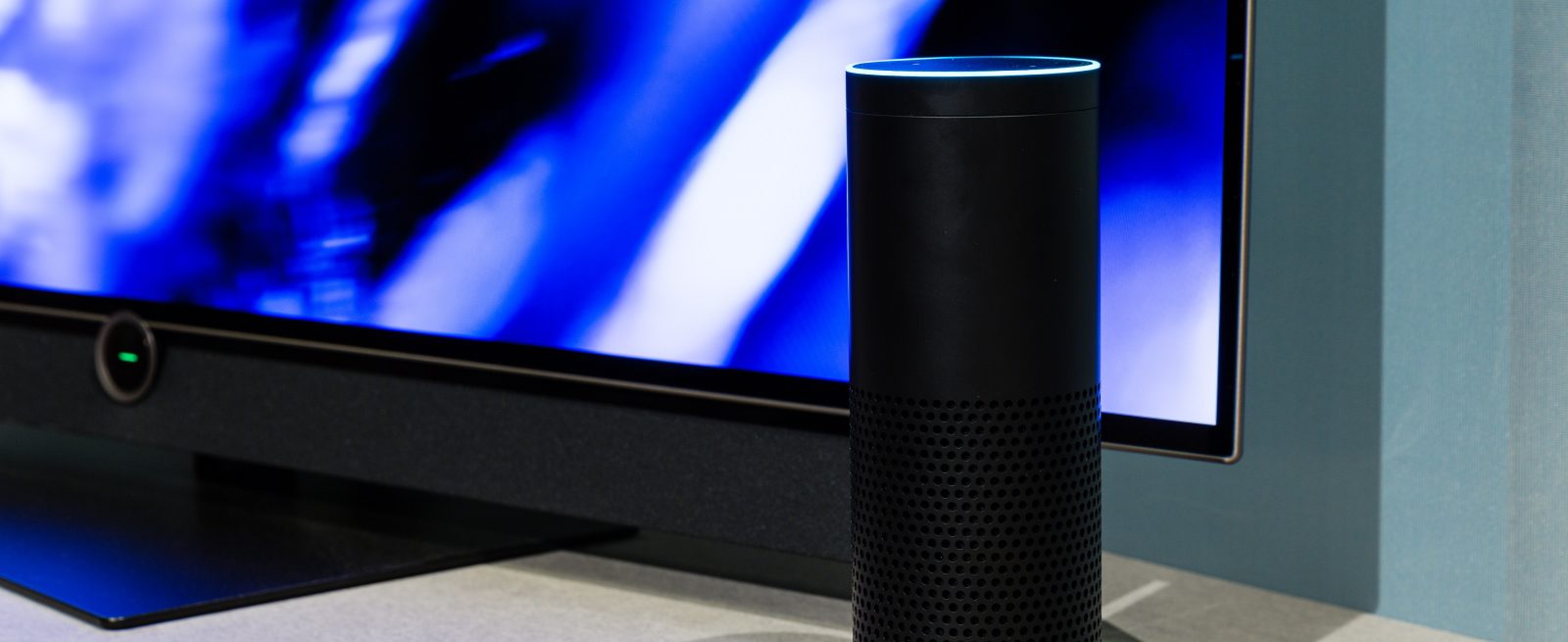How Restaurants Can Take Advantage of the Voice Search Trend
5 Min Read By Georgina Rayner
The number of consumers that start their purchase journey using a search engine is growing. For example, a study by Power Reviews in 2018 found that over 70 percent of consumers start their purchase journey on Amazon or via search engines. Importantly, voice search is becoming an increasingly popular way for consumers to find the information they need, quickly and often when on the go via search engines. Something highlighted by Google CEO Sundar Pichai, who announced that 20 percent of mobile search queries are now from voice search during his Google I/O keynote in May 2018.
For restaurant owners this means that more of your potential customers are using voice search to find restaurants just like yours. However, if your website is not optimised for voice search, the restaurants they will find will be competitors and not your own. With that in mind, the rise of voice search is something restaurant owners can ill afford to ignore. Your customers are already using voice search so the question is, is your business ready?
Over the past 12 months there have been a number of important developments in the realm of voice search, from the launch of speak able schema (code mark-up that allows additional information from your website to be pulled into search engine results) to the growing base of smart speakers and other voice assistant/augmented smart devices, even smart fridges and microwaves. The web is becoming more fractured by the day. The faster and more accurately you can answer your customers’ query, the more likely they are to book a reservation with your restaurant over a competitor.
So what are the most important characteristics of voice search that restaurant owners need to be aware of?
The rise of voice search is a product of the modern lifestyle. Fast-paced, on the go and data packed. It provides immediate answers, anywhere and this is vital for restaurant owners adapting to this new arena. Not only do consumers want their search to be fast and easy, they probably want results nearby as well. A report by Chatmeterfound that, 21 percent of consumers say they use voice search to find a local business or restaurant, and 63 percent are looking for something nearby in general.
The desire to have immediate, local results means that for search engines, delivering a useful result is less about the search query itself and more about how it is used in the context of a search. For example, when in New York and searching for an Italian restaurant, users are increasingly likely to use search queries like “Italian restaurant near me” as opposed to “Italian restaurant New York”. This because they know that the result served should reflect their location anyway, so there is no need to specify the location.
This begs the question, as a restaurant owner as to how can I prepare my website for the voice search revolution? First, we’ll briefly run through some fundamental restaurant website optimisations that would apply to voice search as well as traditional search:
- Your website should clearly list your address and all relevant contact details.
- Include lots of photography of the food and drink you serve as well as the interior of the restaurant.
- Include your menu.
- Include any client testimonials or reviews.
- Include a clear, easy way to make a make a reservation.
Now, let’s look at some of the more advanced optimisation techniques that can help set your restaurant apart from the competition when it comes to voice search.
Schema Mark-Up
Schema mark-up is used by search engines to better interpret the content of given web pages. If added correctly, it means that information like your opening hours, address and directions can be pulled through into search engine results. Have you ever seen gold review stars appearing in search engine results underneath a website listing? This is an example of Schema mark-up. Consumers want to see results as quickly as possible so showing key information about your restaurant in search engine results rather than making the user click through to your website can set you apart from the competition. If you are website design/development savvy then you can implement the mark-up yourself (there is specific mark-up for restaurants) or you can ask your digital agency or team to implement it for you.
Local Content
As mentioned above, a key expectation of consumers using voice search is that they will be provided with results that are nearby. This means that conveying the location of your restaurant is critical. You can do this by simply displaying your address and using schema-mark-up as outlined above as well as ensuring that key SEO elements on your web pages (such as title tags) reference your location. You can also create brand new content such as a blog post based on relevant local topics such as local food festivals which will also increase your local signals in the eyes of search engines.
Provide the Answers
Using keyword research tools such as Google Keyword Planner (if you have an active Google Ads account) or Answer the Public you can identify the type of questions that your customers are asking such as, “find restaurants in New York with a view”. Once you have a list of such questions, you can create content that helps to answer them. Remember that if you answer a given search query well enough, some of your content could be included in a featured snippet. Featured snippets are shown at the top of Google results pages (often referred to as position zero) and are usually in a format different from other results so as to stand out. Featured snippets are a small piece of content taken from a given web page that Google deems to answer the search query most concisely and accurately. They are often taken from a section of the page marked up with H-tags, lists, or bullet points as these are easily readable by Google. Currently, Google Home and Google Assistant read featured snippet results (position zero); this is why optimising for them is more important than ever!
Speed
We have discussed how important speed is for today’s consumer; however, did you know that page speed is also a ranking factor that search engines take into consideration? As a result, if you want to rank highly either in traditional or voice search results it is best to ensure that:
- Your site is responsive and works well on mobile devices.
- Images are optimised.
- Files are compressed.
- You utilise website caching to improve page speed.
- Your server’s response time is reduced.
You can test the speed of your website as well as if it is mobile friendly using tools provided by Google.
Google My Business Listing
Setting up a Google Business listing is free and offers an easy way for your customers to find you. For search queries that include “near me” or similar phrases rather than a specific location, search engines often rely on the user’s location and turn to Google My Business listings for results. With a huge number of “near me” style searches taking place, it has never been so important to claim your Google My Business listing. Once claimed, ensure that your name address and phone number are accurate. Use the introduction field to really sell your restaurant and be sure to add lots of images of the food and interior. It’s also very important to choose the right category. Remember to make sure all the information is accurate as even slight differences in business information can be detrimental to your local search performance.
While we can’t predict the exact future of voice search we do know that it is gaining traction. With that in mind, now is a great time for restaurant owners to take action to respond to this trend and make sure they stay one step ahead of the competition.
Sources
http://www.powerreviews.com/wp-content/uploads/2016/06/Path-to-Purchase-Whitepaper061716.pdf
https://marketingland.com/google-io-177651
https://www.chatmeter.com/wp-content/uploads/2018/10/Chatmeter-VEO-Whitepaper.pdf


